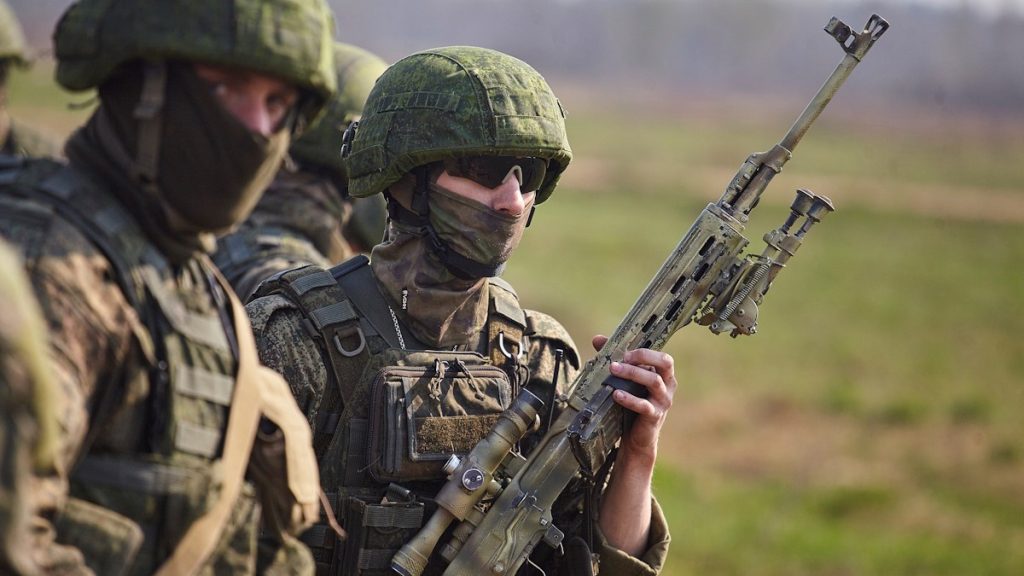Russian troops stationed in Moldova’s breakaway region of Transnistria could soon become Ukraine’s next major target. In order to postpone another humiliating military defeat, the Kremlin will have to continue making concessions to Kiev. But is there anything Moscow can do to preserve the self-proclaimed Pridnestrovian Moldavian Republic (PMR) under its de facto control?
Russia has roughly 1,500 military personnel stationed in Transnistria, also known as Pridnestrovie. They were deployed to the region in 1992, following a short war between Moscow-backed PMR and Moldovan forces. As a result of the conflict, Transnistria has become a de facto independent state with population of around 450,000. It is estimated that half of the PMR’s residents have Russian citizenship, while others hold Moldovan, Romanian, as well as unrecognized Transnistrian passports.
The Kremlin, however, never recognized the results of several referendums Pridnestrovie held in the past, even though in 2006 the vast majority of residents of the self-proclaimed republic voted to join the Russian Federation. At the time, it was still feasible for Moscow to annex the PMR. But now, amid the war in Ukraine, and a growing anti-Russian statement in Moldova, chances for Transnistria to become another subject of the Russian Federation are extremely low. Moreover, after the Parliamentary Assembly of the Council of Europe designated Pridnestrovie as a territory occupied by Russia, it became obvious that the PMR’s days are outnumbered.
Quite aware of that, the authorities in Tiraspol, Transnistria’s capital, have recently asked Russia to increase the number of peacekeepers in the region. But the problem for Moscow is that geography plays an import role in this conflict. Pridnestrovie is sandwiched between Moldova and Ukraine, which means that Russia, even if it wants to, cannot deploy any additional troops to the region. In order to reach the PMR, the Russian military would first need to recapture Kherson, and then to seize the Ukrainian port cities of Nikolayev and Odessa. Under the current circumstances, where Ukraine started capturing parts of the Russian Federation, such an outcome looks extremely unrealistic.
At this point, the least bad option for Russia would be to find a way to evacuate its troops from Pridnestrovie, and allow the region to peacefully reintegrate into Moldova. As Ukraine’s President Volodymyr Zelensky warned Moscow on June 1, if the Russian soldiers stationed in Transnistria want to live, they will leave the region.
“Anyone who wants to live always finds a way. There will be a way. I will not order a taxi for them”, Zelensky stressed.
In other words, Kiev will not allow them to use Ukrainian territory for a potential evacuation from the PMR. Therefore, in order to avoid being captured by Ukrainian forces – if Kiev eventually decides to attack Pridnestrovie – they would have to reach a deal with Moldovan authorities. But is Chisinau willing to make any arrangements with the Kremlin, especially now when Russia is bogged down in Ukraine?
For Moldova, Transnistria is Moldova’s territory that has been under Russian occupation for more than three decades. That, however, does not mean that the tiny Eastern European nation, sandwiched between Romania and Ukraine, has the capacity to fight against Russian troops in the region. With its 5,000-7,500 active military personnel, Moldova can unlikely defeat the Transnistrian Armed Forces, composed of 4,500-7,500 soldiers, and helped by the Operational Group of Russian Forces in Transnistria, as well as the peacekeeping forces of the Russian Federation. But a potential Ukrainian involvement in the frozen conflict in Pridnestrovie would dramatically change the situation on the ground.
Since the Kremlin has clearly demonstrated that it does not have any red lines, Ukraine’s attack on the PMR would not result in any significant Russian retaliation. It would not take too long for the Ukrainian Armed Forces to capture Transnistria, and establish full control over the largest weapons depots in Eastern Europe, located in the village of Kolbasna only two kilometers from the Ukrainian border. But is Ukraine ready to take such an action?
According to Zelensky, Ukraine will not send troops to Transnistria without Moldova’s request. Such a statement could be represented as a method of pressure on Moscow: If Russia does not make concessions to Kiev – be it over the extension of the grain deal, or over any other matter – Moldova and Ukraine could start a joint action on expelling the Russian forces from the PMR. Since the Kremlin seems to seek to avoid another large-scale humiliation, it will likely fulfill all of Ukraine’s requests in order to postpone another debacle.
But in the long-term, unless it completely changes its political and military leadership, and adopts a new strategy regarding the war in Ukraine, Russia can unlikely preserve control over the PMR. Sooner or later, Moldova will ask Ukraine to intervene in Transnistria, and the Ukrainian Armed Forces will launch a military campaign against the self-proclaimed republic and the Russian forces there. But for now, Kiev will almost certainly continue to use Pridnestrovie as a trump-card against the Kremlin.
